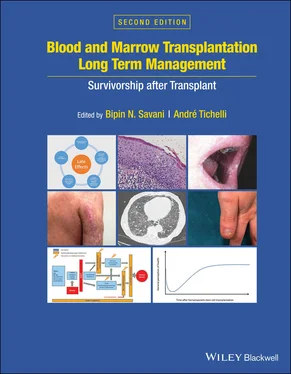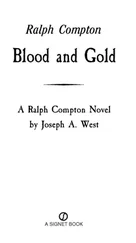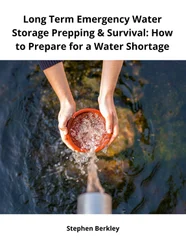Prevention Treatment Other Agents Recommendation for the Survivor/General Practitioner Avascular Necrosis Screening/Surveillance Prevention Treatment Recommendations for the Survivor and General Practitioner References CHAPTER 31: Late neurologic complications Introduction Pathophysiology Frequency/cumulative incidence Risk Factors Clinical Entities Surveillance/ screening Prevention Recommendation for the survivors / general practitioner References CHAPTER 32: Neurocognitive dysfunction Introduction Definition and critical domains of neurocognitive dysfunction Risk factors and correlates Biomarkers as potential mechanisms Neurocognitive dysfunction in adult patients with HCT Neurocognitive dysfunction in special populations Assessment Interventions Concluding remarks References CHAPTER 33: Psychological Distress Introduction Late survivorship Screening for distress Treatment Recommendations for the survivors/general practitioner References CHAPTER 34: Evaluation and management of fatigue in survivors of allogeneic hematopoietic stem cell transplantation Introduction Pathophysiology of Fatigue in HSCT Survivors Pharmacologic interventions Non‐pharmacologic interventions Complementary and integrative therapies Summary References CHAPTER 35: Social Issues Introduction Social Factors Associated with HCT Access and Outcomes Influence of HCT on Social Well‐being Relationship Between Social and Psychological Factors Instruments to Assess Social Risks Conclusion References CHAPTER 36: Health‐related quality of life in adult and pediatric survivors Introduction Quality of life Clinical Features of Treatment with Allogeneic HSCT Health‐related Quality of Life Physical FunctionAdults Psychological function Social and role functioning Benefit‐finding and post‐traumatic growth Healthy lifestyle and health‐promoting behaviors Application to practice Interventions Summary References
9 SECTION 3: Supportive care and patients reported outcomes CHAPTER 37: Immunosuppressive agents and monitoring in long‐term survivors GVHD Prophylaxis Agents: GVHD Treatment Agents References CHAPTER 38: Nutritional support and nutritional supplementation Introduction (Definition; subgroups) Pathophysiology Frequency/cumulative incidence Risk factors Surveillance/ screening Prevention Treatment Recommendation for the survivors / general practitioner References CHAPTER 39: Daily routines and healthy lifestyle guidelines Background Education Infection Prevention Compliance with Scheduled Follow Up Health Maintenance Screenings Community/Home Support Summary References CHAPTER 40: Prevalent psychosocial adjustment issues and solutions Introduction The patient and their support system: coping with stress in the long‐term care setting The patient and caregiver: facing intimacy issues Other quality of life issues for the stem‐cell transplant patient Conclusion References CHAPTER 41: Complementary and alternative medicine in HSCT Introduction Natural products in HCT recipients Mind and body practices in HCT recipients Other complementary and alternative medicine Safety of complementary and alternative medicine Approach to CAM discussions Future directions References CHAPTER 42: Impact of adherence in outcome of long‐term survivors Introduction Adherence Non‐Adherence Non‐intentional and intentional non‐adherence HSCT a risk factor for non‐adherence Recommendation for healthcare providers Future research Conclusion References CHAPTER 43: Prominent role of allied health professionals Introduction Immunizations References CHAPTER 44: Patient reported outcomes Introduction Basic concepts about PROs Perceived health status Physical function and symptom burden post‐HCT Psychological aspects post‐HCT Social aspects post‐HCT Behavioral aspects post‐HCT PROs and GVHD PROs as predictors of HCT survival Conclusion References CHAPTER 45: Caregivers of long‐term survivors Introduction Frequency/cumulative incidence Risk factors Surveillance/ screening Recommendation for the survivors/caregivers/general practitioner References CHAPTER 46: Patient’s perspective Lilian Living a normal Life Hello Cancer So, here we go! Staging the Cancer Staging and Sarah Cannon Clinical Trials Lymphomaniac Remission PET Scan and What's Next? Vanderbilt Hematology and Stem Cell Clinic Transplant Day Now for the Fun Part: Four Months of Treatment Going Home Returning to Everyday Life Twenty‐Three and Me / Ancestory.Com Medical Surprises and Life for the past 10 Years Blood Clots More Post‐Transplant Medical Surprises Colonoscopy Colon Cancer Surgery Tumor Board Wake Up Call Radiation Treatments The Puppy from Hell The Move to Florida The last of the Cancer‐Related Episodes The Continuation of the Story but not the End So Much to be Thankful For
10 APPENDIX 1: Commonly used transplant‐related medications in long‐term survivors References
11 APPENDIX 2: The eGVHD App References
12 Index
13 End User License Agreement
1 Chapter 2 Table 2.1 Transplant Registries Collecting Data on HCT Survivors
2 Chapter 3 Table 3.1 Different models of long‐term transplant clinics Table 3.2 Significant aspects to consider when building up a long‐term follow...
3 Chapter 4 Table 4.1 Telehealth modalities that can apply to Long Term Follow Up (LTFU) ... Table 4.2 Safeguarding medical information and photos in telehealth Table 4.3 Benefits and challenges of the telemedicine LTFU model for HCT surv...
4 Chapter 5 Table 5.1 Elements of a survivorship care plan for patients treated with hema... Table 5.2 Check‐list of recommendations for counseling of the long‐term survi... Table 5.3 Summary of recommendations for screening and prevention of late com...
5 Chapter 6 Table 6.1 Non‐relapse late and very late effects after allogeneic HCT
6 Chapter 7 Table 7.1 Common Late Effects and Complications after Autologous Hematopoieti...
7 Chapter 8 Table 8.1 LTFU recommendations for survivors
8 Chapter 10 Table 10.1 Summary recommendations for screening and prevention of late compl... Table 10.2 Screening recommendations for subsequent malignancies in survivors...
9 Chapter 13Table 13.1 Preventive options of infections in long‐term survivors after allo...Table 13.2 Preventive options of infections in long‐term survivors after auto...
10 Chapter 14Table 14.1 Risk factors for progression to lower respiratory tract diseaseTable 14.2 Infection Control measures to reduce risk of CRV infection
11 Chapter 15Table 15.1 Classification of patient/donor depending on the HBV markersTable 15.2 Recommended measures in HCT with patients/donors with HBV infectio...Table 15.3 Possible results of the HCV screening before HCTTable 15.4 Recommended AVT against HCV depending on the viral genotypeTable 15.5 Recommended measures in HCT when patient or donor are infected by ...Table 15.6 More frequently used antiviral drugs and combinationsTable 15.7 Effect of anti‐HIV agents on HSCT drugs metabolization
12 Chapter 16Table 16.1 Approaches proposed to identify associated predictive biomarkers o...Table 16.2 Specific criteria for cGVHD from the 2014 Pathology Working GroupTable 16.3 Criteria for the diagnosis of cGVHD skin: categorization of diagno...
13 Chapter 17Table 17.1 Types of ocular complications after HSCT; screening; prevention an...Table 17.2 Treatment for ocular GVHD
14 Chapter 18Table 18.1 Oral complications of HCT
15 Chapter 19Table 19.1 Thyroid manifestations in stem cell transplant recipients, with re...
16 Chapter 20Table 20.1 When to refer to a Gynecology or Urology clinicianTable 20.2 Hormone and contraceptive options at the time of transplant
17 Chapter 21Table 21.1 When to refer to a Gynecology or Urology clinicianTable 21.2 Hormone and contraceptive options at the time of transplant
18 Chapter 24Table 24.1 Diagnostic criteria of BOS following HSCTTable 24.2 Comparison between bronchiolitis obliterans syndrome and cryptogen...
Читать дальше











